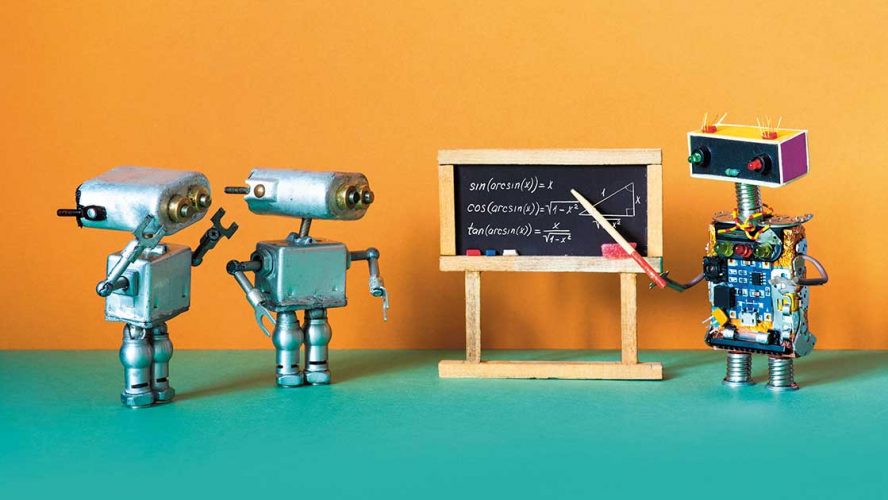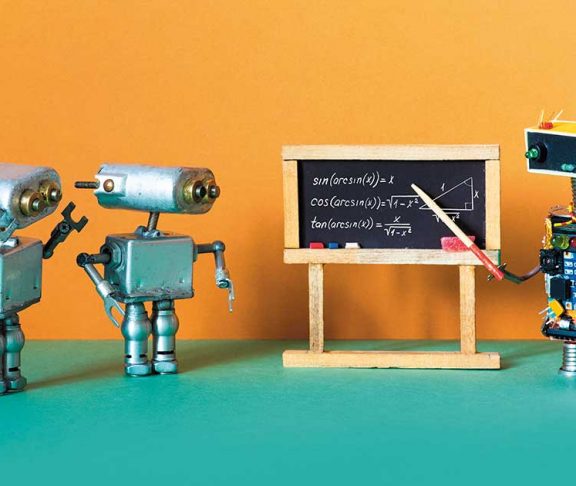AI is constantly evolving to provide better AI techniques and allow more AI functionality and different applications to use AI. Many try to make it impossible to know if AI is being used – and in some cases to gain more investors, start-ups have even faked the use of AI with humans.

Coreena Brinck
Partner i Zacco
Alas, as more AI systems are successfully cloning human behaviour, ethical issues over this use are rising. A machine cannot know the moral difference between good and bad behaviour and some AI systems have learnt that “lying” and “cheating” 1,3 gets better results than not lying or cheating. Whilst most humans use AI for good other uses may not always be so benign. Just think of the possible consequences of a deep fake presidential speech!
Used to make decisions
These days AI is being used to make decisions affecting everything from our health to our mortgages, from our jobs to our education. The EU 2019 guidelines for ethical AI address human agency, safety, privacy, fairness, well-being, transparency and accountability. If compliance is to be encouraged then details of how AI is trained and makes decisions should be disclosed. This creates a commercial risk, if such disclosures are open to public scrutiny, as the level of detail could allow competitors to have access to details of proprietary AI system technology.
Intellectual Property Rights can reduce this risk and can deter or prevent a competitor using the information made public by such a disclosure to develop their own rival AI. So if we want to encourage transparency, it’s important to understand how IPRs could protect any disclosed information.
When the world changes, so do we
Copyrights
For example, any proprietary AI computer code could be protected against copying using copyright, even if coded by another AI system in some countries (like the UK). Training data (both raw and structured) could be protected against copying using database rights (even if copyright in the individual records is held by someone else). A web-portal or user interface could be protected using design rights. Until disclosed, identifying various internal workings of your AI system as trade secrets could help you swiftly take legal action if a trade secret ever gets stolen.
Not all confidential information is a trade secret though so it’s a good idea to seek legal advice to understand what to do if you want to have the best chance of protecting something as a trade secret. Once the information being kept secret is known to public, there is no secret though – and the information cannot be protected any more as a trade secret!
Patent
Patents are another form of IPR which can protect AI which has a new (as in not yet disclosed) and not obvious (i.e. inventive) technical character or purpose. It’s a very popular form of protection if you can get it.
The World Intellectual Property Organisation (“WIPO”) 2019 technology trends report on AI found patenting activity booming with around 170 000 patent applications filed between 2013 and 2019 – and the trend is continuing despite COVID 19. Of course, a patent application can take a long time to turn into a granted (and enforceable) patent and costs thousands of Euros to obtain.
If, however, you may have to disclose how your AI system works, for example, to an ethical or regulatory body who will make your disclosure open to public scrutiny, then filing a patent application as soon as you can beforehand may make sense as you won’t be able to rely on trade secrets to protect anything you may need to disclose.
For anyone developing proprietary AI, it is up to them if and how they derive value from any IPRs. It may make more sense commercially to relinquish any IPRs and make the technology free for others to use, or they could enforce their rights to stop infringement and protect their market share. Sometimes they might just want to licence their IPRs. Whatever choice is made, it will remain important to understand how IPRs work to maximise the value they could add.
The future of intellectual property
The world is changing and there is a growing need to protect everything from ideas and integrity to data and inventions. To keep up with the needs of our clients, we sort intangible assets into three new, but familiar terms. Together, they cover everything we do, and they define our new way of looking at intellectual property. And cover all aspects of it. Read more about Zacco here.
Av: Coreena Brinck, Partner i Zacco


